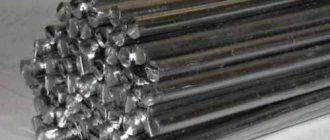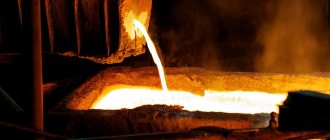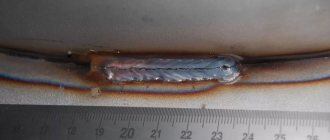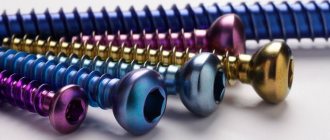The online calculator determines the calculated permissible stresses σ depending on the design temperature for various grades of materials of the following types: carbon steel, chromium steel, austenitic steel, austenitic-ferritic steel, aluminum and its alloys, copper and its alloys, titanium and its alloys according GOST-52857.1-2007 [1].
| Initial data: | |
| Estimated ambient temperature T, °C | |
| Material type | |
| Material grade | |
| Solution: | |
| Allowable stress of the material [σ], MPa | determination of permissible stress |
Assistance for the development of the premierdevelopment.ru project
Send mail and we will know that we are moving in the right direction. Thank you for stopping by!
I. Calculation method:
Allowable stresses were determined according to GOST-52857.1-2007 [1].
for carbon and low alloy steels
St3, 09G2S, 16GS, 20, 20K, 10, 10G2, 09G2, 17GS, 17G1S, 10G2S1:
- At design temperatures below 20°C, the permissible stresses are taken to be the same as at 20°C, subject to the permissible use of the material at a given temperature.
- For intermediate design wall temperatures, the permissible stress is determined by linear interpolation with rounding the results down to 0.5 MPa.
- For steel grade 20 at Re/20e/20/220.
- For steel grade 10G2 at Rр0.2/20р0.2/20/270.
- For steel grades 09G2S, 16GS, strength classes 265 and 296 according to GOST 19281, the permissible stresses, regardless of the sheet thickness, are determined for thicknesses over 32 mm.
- The permissible stresses located below the horizontal line are valid for a service life of no more than 105 hours. For a design service life of up to 2*105 hours, the permissible stress located below the horizontal line is multiplied by the coefficient: for carbon steel by 0.8; for manganese steel by 0.85 at temperatures <450 °C and by 0.8 at temperatures from 450 °C to 500 °C inclusive.
What does the transcript look like?
Knowing the labeling makes it possible to directly understand what exactly is offered by the manufacturer and what features the product has. From a technical point of view, the marking 09g2s means the following:
- 09 - exact proportion of carbon in the total alloy;
- G2 - presence of manganese and its fluctuation in the total volume - 2%;
- C—presence of silicon, the proportion of which does not exceed 1%.
However, one should not think that the composition of steel includes only those elements that are indicated in the marking.
In addition to manganese and silicon, the overall composition is supplemented by sulfur, nitrogen, nickel, copper and phosphorus. However, the share of additional components rarely exceeds 1%, so they are not mentioned in the labeling.
Also, decoding concerns not only doping, but also other criteria. For example, the following should be included here:
- Structure and changes after the hardening process;
- Main purpose;
- Manufacturing method;
- Chem. composition of the material.
As a result, there are analogues for these indicators on the domestic market. You can often hear that 09g2s is steel 345. However, the second indicator is intended for builders and does not mean the chemical composition, but the fluidity indicator, which corresponds to the steel standard.
Specifications
The main properties of 09g2s steel are based on the composition, as well as its individual characteristics, which are successfully used by metallurgists in all areas of industrial activity.
The main feature of the brand is the easy weldability of steel. Welders use ADS and RDS under gas protection. However, those products that have been treated with chemicals and critical temperature conditions may not be weldable.
Among the main mechanical features, the following characteristics should be highlighted:
- Hardness, according to the Brinell method;
- Yield for strain, which is displayed in MPa;
- Operation under a certain load;
- Indicators of shape change during narrowing and rupture.
The strength class corresponds exactly to the marking of 345 steel. This includes many other grades, which may even differ in their manufacturing method and chemical composition. GOST describes the main types of rolled metal:
- Profiles with designated thickness;
- Round, Varietal and Shaped;
Hardness is measured based on the Vickers, Rockwell and Brinell methods. Preference is given based on the type of product in the production of which steel marked 09g2s is used
Also, it is important to know the hardness indicator if welding work is necessary so that the seam remains strong.
Density varies depending on the chemical composition, and on average reaches 7800 kg/m3. However, alloying components have the ability to increase weight as well as significantly reduce it. In the second case, copper or cobalt can play a role, and in the second, tungsten.
Technical features describe the basic requirements for working with materials from which it is planned to manufacture steel products for servicing gas systems and other facilities in many areas of industrial activity.
The allowable stress for this steel grade depends on the following factors:
- Temperature conditions at which operation is planned;
- Brand and strength class;
- Thickness.
Modern European analogues are most consistent with the mechanical features of the specified brand. But the chemical composition does not have to be the same. The Bulgarian version should be highlighted separately, which is very similar to the domestic marking 09g2s.
for heat-resistant chromium steels
12XM, 12MX, 15XM, 15X5M, 15X5M-U:
- At design temperatures below 20 °C, the permissible stresses are taken to be the same as at 20 °C, subject to the permissible use of the material at a given temperature.
- For intermediate design wall temperatures, the permissible stress is determined by linear interpolation with rounding the results down to 0.5 MPa.
- The permissible stresses located below the horizontal line are valid for a service life of 105 hours. For a design service life of up to 2 * 105 hours, the permissible stress located below the horizontal line is multiplied by a factor of 0.85.
for heat-resistant, heat-resistant and corrosion-resistant austenitic steels
03X21H21M4GB, 03X18H11, 03X17H14M3, 08X18H10T, 08X18H12T, 08X17H13M2T, 08X17H15M3T, 12X18H10T, 12X18H12T, 10X17H13M2T, 10X 17H13M3T, 10X14G14H4:
- At design temperatures below 20 °C, the permissible stresses are taken to be the same as at 20 °C, subject to the permissible use of the material at a given temperature.
- For intermediate design wall temperatures, the permissible stress is determined by interpolating the two closest values indicated in the table, with the results rounded down to the nearest 0.5 MPa.
- For forgings made of steel grades 12Х18Н10Т, 10Х17Н13M2T, 10Х17Н13М3Т, the permissible stresses at temperatures up to 550 °C are multiplied by 0.83.
- For long rolled steel grades 12Х18Н10Т, 10Х17Н13M2T, 10Х17Н13М3Т, permissible stresses at temperatures up to 550 °С are multiplied by the ratio (R*p0.2/20) / 240. (R*p0.2/20 - the yield strength of the long rolled material is determined by GOST 5949).
- For forgings and long products made of steel grade 08X18H10T, the permissible stresses at temperatures up to 550 °C are multiplied by 0.95.
- For forgings made of steel grade 03X17H14M3, the permissible stresses are multiplied by 0.9.
- For forgings made of steel grade 03X18H11, the permissible stresses are multiplied by 0.9; for long products made of steel grade 03X18H11, the permissible stresses are multiplied by 0.8.
- For pipes made of steel grade 03Х21Н21М4ГБ (ZI-35), the permissible stresses are multiplied by 0.88.
- For forgings made of steel grade 03Х21Н21М4ГБ (ZI-35), the permissible stresses are multiplied by the ratio (R*p0.2/20) / 250. (R*p0.2/20 is the yield strength of the forging material, determined according to GOST 25054).
- The permissible stresses located below the horizontal line are valid for a service life of no more than 105 hours.
For a design service life of up to 2*105 hours, the permissible voltage located below the horizontal line is multiplied by a factor of 0.9 at temperatures <600 °C and by a factor of 0.8 at temperatures from 600 °C to 700 °C inclusive.
Comparison with another steel grade
For example, for 09g2s and st3 the difference is determined primarily by the carbon content. For St3sp it is 10-20 times higher than what is found in the low-alloy alloy.
St3sp – refers to carbon alloys. This grade of steel is characterized by high brittleness and rapid destruction at low temperatures. If the brand being described has a lower limit of -70 degrees, then the object of comparison is only -20.
The quality of St3sp is ordinary, which indicates a likely high presence of sulfur and phosphorus. Then, like 09g2s is high quality. All other advantages are already in the previous description. It only remains to note that the cost of this brand is significantly higher than the price of St3sp.
Video about low alloy steels:
for titanium and its alloys
VT1-0, OT4-0, AT3, VT1-00:
- At design temperatures below 20 °C, the permissible stresses are taken to be the same as at 20 °C, subject to the permissibility of using the material at a given temperature.
- For forgings and rods, the permissible stresses are multiplied by 0.8.
II. Definitions and notations:
Re/20 - minimum value of the yield strength at a temperature of 20 °C, MPa; Rр0.2/20 - minimum value of the conditional yield strength at a permanent elongation of 0.2% at a temperature of 20 °C, MPa. permissible stress - the highest stress that can be allowed in a structure, subject to its safe, reliable and durable operation. The value of the permissible stress is established by dividing the tensile strength, yield strength, etc. by a value greater than one, called the safety factor. design temperature - the temperature of the wall of equipment or a pipeline, equal to the maximum arithmetic mean value of the temperatures on its outer and inner surfaces in one section under normal operating conditions (for parts of nuclear reactor vessels, the design temperature is determined taking into account internal heat releases as the average integral value of the temperature distribution over the thickness of the vessel wall ( PNAE G-7-002-86, clause 2.2; PNAE G-7-008-89, appendix 1).
Design temperature
- [1], clause 5.1. The design temperature is used to determine the physical and mechanical characteristics of the material and permissible stresses, as well as when calculating strength taking into account temperature effects.
- [1], clause 5.2. The design temperature is determined on the basis of thermal calculations or test results, or operating experience of similar vessels.
- The highest wall temperature is taken as the design temperature of the wall of the vessel or apparatus. At temperatures below 20 °C, a temperature of 20 °C is taken as the design temperature when determining permissible stresses.
- [1], clause 5.3. If it is impossible to carry out thermal calculations or measurements and if during operation the wall temperature rises to the temperature of the medium in contact with the wall, then the highest temperature of the medium, but not lower than 20 °C, should be taken as the design temperature.
- When heating with an open flame, exhaust gases or electric heaters, the design temperature is taken equal to the ambient temperature increased by 20 °C for closed heating and by 50 °C for direct heating, unless more accurate data are available.
- [1], clause 5.4. If a vessel or apparatus is operated under several different loading modes or different elements of the apparatus operate under different conditions, for each mode its own design temperature can be determined (GOST-52857.1-2007, clause 5).
III. Note:
The source data block is highlighted in yellow, the intermediate calculation block is highlighted in blue, and the solution block is highlighted in green.
Application area
As previously noted, the scope of application of this metal is very extensive:
- Creation of bridges for industrial and civil purposes.
- Production of equipment and other elements for the mechanical engineering, shipbuilding and chemical industries.
- Production of tanks and boilers that are exposed to high temperatures during operation.
- Creation of backbone networks.
- Production of various tools and technical equipment, devices.
- Production of agricultural and other equipment.
The low-alloy steel in question is used in more than 15 industries. Today it is one of the most sought-after metals. In addition, it is subjected to heat treatment, which can significantly improve performance.
In conclusion, we note that the release form can be represented by a square or round cross-section. Strips are also produced, the width of which varies from 40 to 160 mm, and the thickness of 12-50 mm. Sheet metal is supplied to production workshops, classified according to indicators such as manufacturing method and thickness.







